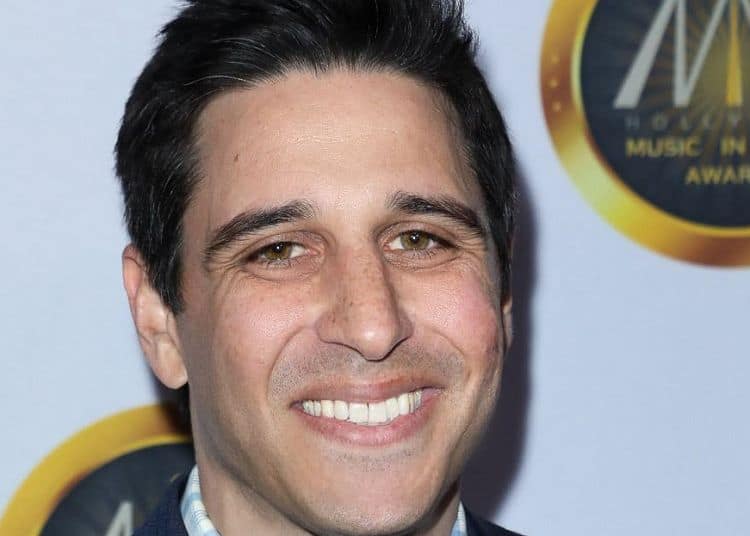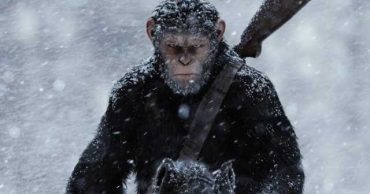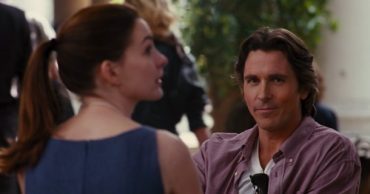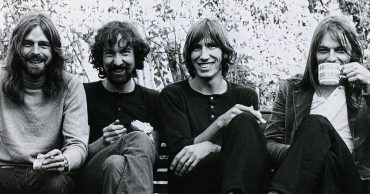
In case you aren’t familiar with Epic Pictures’ Artik (directed by Tom Botchii), the horror film follows a comic book obsessed serial killer Artik (Jerry G. Angelo) who teaches his son (Gavin White) how to avoid a series of brutal murders until the boy befriends a mysterious man, Holton, who threatens to expose their horrifying family secret. As Holton gets closer to the truth, he must not only fight for the young boy’s life, but for his own. The film’s score by Corey Wallace (NBC’s Siberia) was recently released by Notefornote Music and is definitely worth a listen, as it not only gives the film another layer of thick emotion, but also brings a unique intensity to the characters. To learn more about Wallace’s Artik score, we conducted the below Q&A with him and discussed many topics.
-Congrats on your Artik album release. Was there a track on the album that was particularly challenging for you?
Thank you! I definitely worked the longest and hardest on the Main Titles in order to get it just right. It’s exceedingly rare that movies even have a Main Titles sequence at all anymore, so to get the opportunity to write for one was a real pleasure. The Artik Main Titles is only picture and music, so the stakes are higher for the score since there’s nothing to hide behind. The most challenging aspect of writing this track was that the director, Tom Botchii, asked for a big hit and escalation in the music pretty early in the piece, about 50 seconds in on a nearly 3-minute track. It would have been easier to create a slower, longer build, so after hitting a high note very early, it was a tough task to maintain that energy and continue to build all the way to the end.
-A sense of dread and dreariness permeates Artik. Did the film’s director, Tom Botchii, want this direction for the score too?
I don’t think we ever used the word dreary while we were scoring the film, but that is a good way to describe Artik’s look and feel, and that visual texture was something I responded to. The key directions from Tom were hits, bass, and ugly, broken sounds. There’s a scene early in the film that sums up this approach, about 8:45 in, where Artik is talking to Boy Adam about the spots he has tagged for gathering Artik’s victims. It’s a scene that could’ve been fine without score or with some droning ambience, but we scored it with these plunky, out of time, out of tune cello hits punctuated by bendy, distorted bass and big hits. There’s no melody, just a constant unsettling propulsion. To me, this score brings out the disturbing subtext of the dialogue and helps color the setting, adding that permeating layer you mentioned. I think approaching the score like this, in a way that’s not normally done, gives it that unnerving sense of dread throughout.
-What makes this film so interesting is that viewers really get a glimpse into Artik’s psyche. How did you go about creating a score to match this?
This is definitely the psychological horror aspect of Artik, where the score’s function is to get inside the head of a disturbed character and reveal his twisted nature. The psyche in question is a broken one with a distorted world view, so those adjectives, broken and distorted, become foundational in a matching score. A key scene is about 11 minutes into the film when Artik is monologuing to his victim (Track 02-The First Round), and I told Tom that I wanted to score this scene like it’s the soundtrack coming out of Artik’s head, it’s the music he hears. This cue features a processed cello sound called “The Artik Drone” which sounds like the nastiness emanating from the character. It’s like the sonic image of a cello but seen through a funhouse mirror, in essence the same, but twisted and perverse. These cello sounds were done by a professional studio musician, but we also created a lot of the sounds ourselves by playing (and I use that term loosely) various instruments that I’ve collected over the years, like bowing an old banjo, scratching a child-sized violin that cannot stay in tune, and banging an old upright piano that I got for free off somebody’s front lawn. In addition to directing duties, Tom also played guitar on the score. He had a very specific sound in mind, so he would come into the studio, detune all the strings on my guitar, and we’d experiment for hours.
-The film is primarily centered at Artik’s farm, where very bad things happen. Yet, the farm is surrounded by sunflowers. How did the setting affect your score?
This concept of horrors happening just beyond the borders of something peaceful and beautiful was something that inspired Tom to make this film. The story peels back the layers and reveals the darkness underneath. Treating the images of sunflowers as something grotesque and ugly was part of the film’s theme, and we constantly attacked these exterior shots with forceful hits, the nasty cello drone, or other sonic madness, and it reinforces that we are heading into dark territory despite the image’s beauty.
-Was there any tracks that you went back and changed after you had got done scoring the film? If so, which ones were they and why did you change?
I definitely revisited every track as I prepared the album. Since the score is originally composed as a compliment to the film, what may work in that medium might not work as well without the picture. Cues for dialogue scenes, especially, are arranged and mixed to deliberately take a backseat to the dialogue, so for the album, I like to remix them so they work better solely as a piece of music, usually bringing certain elements forward in the mix.
Track 01-Artik (Main Titles) probably changed the most. I added an extra introduction of solo guitar to emphasize the main motive, as well as to start the track off even quieter and simpler so I could build more energy. In the Main Titles of the film, the hits and cello bursts are perfectly in sync with the cuts and camera movements, even when they do not align with the rhythm of the music. While this adds a jarring, disruptive quality to the picture, I thought it sounded overly messy on its own, so I edited these hits onto the beat. In Track 05-The Forking, I added a few things like layers of shakers to provide some more color and build on the flurry of sound that I had already done. This change was just because it was a good idea that came to me when working on the album, and honestly, I wish I had thought of it before.
-The pandemic has obviously greatly altered every industry. Has the quarantine effected your work in any way? Or projects you are currently working on?
I was lucky to be in the middle of several projects when production shut down. I was working on a horror score for the film Unsheltered, some animated shorts, and a commercial. I anticipate that the effect for me and others in post-production is going to come later, months from now, when there will be less work due to the shutdown of the current production pipeline. Again, I’m lucky because I can look ahead to that possibility and plan accordingly, whereas many unfortunately had their livelihoods taken away overnight.
A notable effect is that I’m using any extra time right now to do some pre-scoring for a film that has yet to go into production. Using the script, storyboards, some test footage, and many conversations with the director for reference, we’re working on themes and a sound palette for a classic, melodic, orchestral film score. The idea is to establish the heart and soul of the score now, letting the musical ideas come organically without the pressures of adhering to a schedule, which should be better creatively and save time down the road. If there ends up being downtime later this year, then I just have to keep doing homework like this, so to speak, studying scores, watching movies, keeping my composition and production skills sharp, exploring my synths to create new sounds for future horror films, and studio maintenance so that I’m ready to hit the ground running when the industry returns to normal.
-Do you have a favorite genre to score for?
Not one singular favorite, but I love scoring for horror/thriller and animation. The palette of sounds, musical styles and vocabularies used in these genres range wildly, so they provide lots of opportunities to explore different kinds of music. I love variety, so working in these two often opposing genres is fun since I get to produce experimental sounds on one day for Artik, and then the next day write a rousing orchestral adventure for an animated film. I love how horror and animation often allow for the scores to be very forward, active, and strongly engaged in the story telling and drama, and this is the type of a film composer I like to be no matter the genre.
-Are there any shows you are currently watching that the music really stands out to you?
I’m finished with Alex Garland’s Devs, but that’s the most recent example that springs to mind. The use of Regnantem Sempiterna from Jan Garbarek is stunning. It perfectly captures the mystery, the religion, and the horror of the show. The track features a hauntingly beautiful and unique saxophone solo that immediately grabbed me. I’m also finished with M. Night Shyamalan’s Servant, and I was extremely impressed with Trevor Gureckis’ score. It’s original with clear, distinct sounds that are used very dramatically and effectively. I don’t like when a score is too nondescript or becomes wallpaper throughout a show. I want a sonic identity that I can hang my hat on, sometimes I call this music that I can chew because it has a lot of substance. I really appreciate that these filmmakers had the the guts to use the score very aggressively.
-What are you working on next?
One film is Unsheltered that is being wrapped up as we speak. It’s a horror/slasher film produced by James Keitel and John Hollaway who produced Be Afraid, a supernatural horror film that I scored a few years ago for director Drew Gabreski (streaming on Netflix). The film I’m pre-scoring is called Supercell directed by Jamie Winterstern, his feature debut based on his love of storm chasing. I’ve been working with Jamie for 11 years since we met at USC. We worked on Matt Arnold’s Shadow People together as well as the NBC series Siberia, and we’ve done numerous commercials and branded content through his company SwipeMarket. The next horror film I’ll be starting on soon is the sophomore feature from director Gerald Rascionato called Claw. It’s a film about two friends seeking shelter in an abandoned ghost town only to be hunted by a prehistoric predator. Gerald and I bonded over our mutual love of classic orchestral film scores. He temped the film with many of my favorite scores like Jurassic Park, Alien, and Who Framed Roger Rabbit?, which is a high bar to reach, but I’m really excited to get back to that composition style.
 Follow Us
Follow Us




